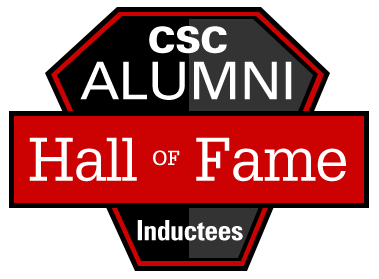 If you use Macromedia's Fireworks for creating Web graphics, you're
benefiting from the digital imaging talents of Richard Krueger (MS '89)
and his brother, Fred Krueger.
If you use Macromedia's Fireworks for creating Web graphics, you're
benefiting from the digital imaging talents of Richard Krueger (MS '89)
and his brother, Fred Krueger.
Together, they formed Fauve Software in 1992, about the time when digital imaging was "just opening up," Richard Krueger says.
He was always interested in digital photography, "but there were not many programs that did digital art" back in the early '90s, Krueger says.
A lot has happened in the dozen years since launching Fauve. One is that software and hardware prices have dropped significantly, making them more accessible to more users. Another is the evolution of mark-up languages for the Web, allowing for better 'discussions' between software modules.
A third is that computers are no longer simply work stations; they are increasingly becoming the base of individuals' entertainment centers.
Using his experience in digital graphics, Krueger aims to help businesses capitalize on these changes by creating graphical computer-user interfaces - or skins - with a unique look and feel that reflect the company's branding or marketing messages. Individuals can also use products being developed at his new company, Skinux, to personalize their computer-user interfaces.
Getting to this point requires tracing Krueger's professional career. It began in Raleigh, where he took positions at IBM and then SAS after graduating in 1984 with an undergraduate degree in mathematics and computer science from Cornell University. He earned his master's in computer science at NC State while working in Raleigh.
In 1990, he and his wife Joy, an artist, went to the University of Singapore, where he had a position teaching and doing research in 3-D graphics visualization and medical graphics.
The Asian economy "was taking off, and they got into making computer components, memory chips," Krueger says. "It was a dynamic place, but the university was wanting." With government funding, the university drew faculty and researchers from throughout the world, creating "a high-tech embassy" environment.
Krueger and his wife came back to the States in 1992, and he started Fauve Software in Raleigh with his brother. At the time, digital imaging was changing from being a high end specialty and becoming more accessible.
"A whole new era of digital imaging was opening up," he says. "We decided to come up with a natural media paint program that worked like water colors on the (computer) screen."
They released their product, Matisse, for $99 per package in 1993. "It was very successful; the right product at the right time," he says.
They then developed xRes, a second digital graphics product that they sold to San Francisco-based Macromedia in 1995, where it evolved into Fireworks.
Both remained with Macromedia in San Francisco a few years, Richard as director of engineering-imaging and Fred as vice president of imaging. In the late 1990's, the company was sold and Richard Krueger decided to move on.
In 1997, he returned to Raleigh. "I built a house and started this company as a hobby," he says. For the first three years, he had no customers and simply wrote software, working mostly by himself, although he did have investors calling to be part of his new venture.
By 2000, though, following the Internet crash, investor sources dried up and he realized that he "had to start making a living," he says. "Being in technology, I was heavily invested in it. I think everyone got burned. It had reached such a level of craziness."
When Krueger incorporated Skinux in 2000, he "had a business plan and one other guy" working with him. He also had lots of people calling and sending him their resumes, people who had been 'burned' when the tech bubble burst at the turn of the century.
He's taking a different tact with Skinux. "I decided that I did not want to run this on the '90s tech company model," Krueger says. Instead, he's vowed not to go after venture capital and "not spend beyond what I take in."
Many have told him, "you're not going to grow, not take it to the next level," he says. His response: "I saw so many take it to the next level, to bankruptcy court. It's not a pretty picture."
Now, with two full time and three part-time employees, he has a growing list of clients, including major corporations.
"Our customers are people who want to upgrade an existing interface, such as x3D, which decided to 'spruce up' its interface. We gave it a new look."
Krueger began forming the idea for Skinux while still at Macromedia.
"I figured the next big thing in imaging would be to use image editing techniques to construct user interfaces - skins - which are much more designed than existing interfaces," he says. He envisions companies could incorporate marketing and branding messages in the stylized skins.
"We can build different interfaces very quickly and they are fully scalable," he says.
Also, as computers have advanced beyond merely being tools for doing a job to multimedia entertainment centers, "customers and software companies that sell to them are demanding user interfaces that transcend the traditional Graphical User Interface," he states in an online white paper.
He compares this to the auto industry, which expanded from the initial black Model T's to today's plethora of colors, shapes, sizes, and options designed to provide unique driving experiences. Krueger sees the same desire for individuality growing among computer users.
They "want a designed appearance that distinguishes the consumer or the vendor, rather than the native computer operating system." Just as individuals create a 'look' for themselves through their style of clothing, "consumers want the 'look and feel' of their software to reflect their age group, tastes and even their cultural outlook on life."
Skinux's Skin User Interface aims to fill this need using techniques and features available through digital imaging software, including transparency and scalability. Such interfaces can be made interactive and are more intuitive for the user, Krueger says.
His technology can also be used to create control panels and launchers, including control panels for scanners and point of sale terminals; games; and in emulation and simulation software.
Skinux skins, written in C++, are not dependent on any particular windowing system or operating system manufacturer. "Skinux is the first truly cross platform skinning solution for Microsoft Windows and Linux systems," he states.
- posted July 2004 - Anna Rzewnicki -

